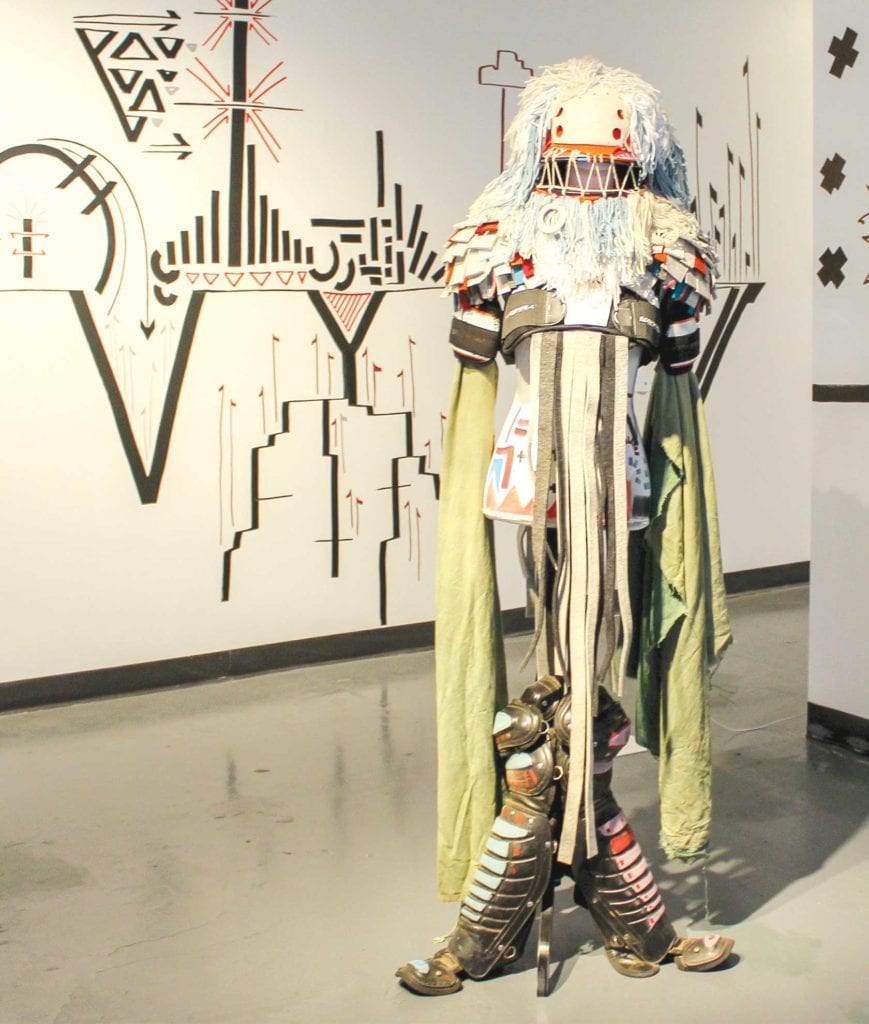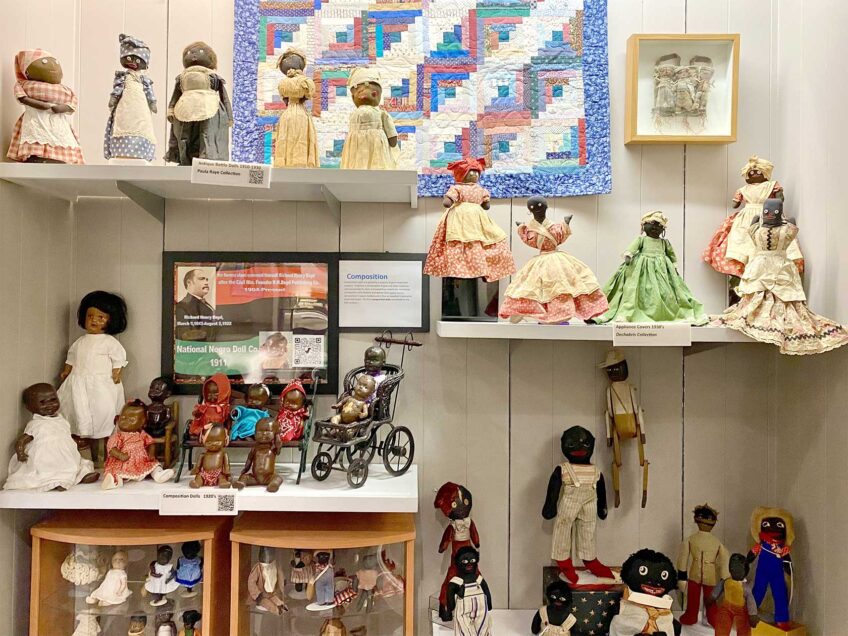
Interdisciplinary artist Cannupa Hanska Luger has transformed Emerson College’s Media Art Gallery into an apocalyptic, indigenous landscape. “Future Ancestral Technologies: nágshibi,” running at the gallery through Dec. 15, tells a science fiction story, reimagining the future using video production, ceremonial regalia, still images and a mural Luger created live at the opening of the show.

Installation view of Cannupa Hanska Luger’s exhibition “Future Ancestral Technologies: nágshibi” at Emerson College’s Media Art Gallery. PHOTO: CELINA COLBY
In the indigenous language Hidatsa, “nágshibi” means “to be past, to be after” or “to exceed, to go beyond.” In a video positioned across from the live-created wall piece, Luger explains the origin myth on which the exhibition is based. The works occur after a portion of the population has left the planet for the new frontier in space. Those remaining on Earth have to go back to their natural roots to start again.
“In this ongoing series, I prototype designs for objects and their use. I test rituals and conduct ceremonies,” Luger says in a statement about the exhibition. “I create a space of futuristic vision in which societies are nomadic, tipis are solar-powered, and humans create their own functional regalia to live through ceremony in acknowledgement of land.”
Several of the video works on view in the show were born out of land-acknowledgment performative actions executed in 2018. In one video piece, a figure gets out of a red pickup truck in the middle of a grassy plain. The video speed is slowed as he places a headdress (also on view in the gallery) on his head and begins to walk away from the truck and into the open plain. In another piece alongside this video, a child in similar attire joins the figure.
As the exhibition tours, it will continue to grow with the addition of dwellings, clothing and tools that merge the use of artificial intelligence with indigenous rituals and ceremony. Though these pieces currently exist in the gallery space, Luger is operating on the understanding that these artworks will become useful pieces of everyday life in the future.
On Sunday, Dec. 8, Larry Spotted Crow Mann, a storyteller of the Nipmuc Tribe of Massachusetts, will give a talk contextualizing the exhibition with local histories and poetry, connecting these images of Southwestern Plains to the urban Boston landscape.
“Future Ancestral Technologies: nágshibi,” provides a unique perspective of native culture, fusing the past, present and future in objects that are both artistic and prophetic.


![Banner [Virtual] Art Gallery](https://baystatebanner.com/wp-content/uploads/2024/04/Cagen-Luse_Men-at-store-e1713991226112-150x150.jpg)

![Banner [Virtual] Art Gallery](https://baystatebanner.com/wp-content/uploads/2024/04/Cagen-Luse_Men-at-store-e1713991226112-848x569.jpg)

